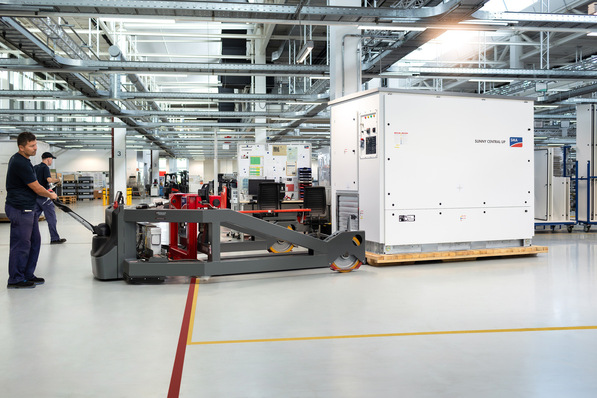During the Council of the European Union meeting Friday morning, EU heads of states and governments agreed to increase the EU’s greenhouse gas emissions target to at least 55% by 2030, compared to a 1990 baseline. This agreement follows the European Commission’s proposal to reduce EU GHG emissions by at least 55%, and the European Parliament’s call for emissions to be reduced by 60%.
Carbon credit price is set to be on a continuous rise
Refinitiv Carbon Research lays out what this means for the industry. “The market reacted positively upon news confirming an agreement of a 55 percent climate target, lifting EUA prices to a new all-time-high of €31.30/t“, Ingvild Sørhus, Lead analyst comments:
Hæge Fjellheim, Head of Refinitiv Carbon Research, comments: “An aggressive tightening of the emissions trading system will be required to make it ‘fit for 55’. Carbon credit prices are set to be on a continuous rise. We forecast EUA prices to average €50 over this decade, ending at €89/t in 2030.
55 percent emission reduction target
“With a 55 percent emission reduction target, even higher carbon prices will be needed to trigger more costly emission reductions in industry sectors as the fuel switching potential fades when coal will almost disappear from the power mix.
Did you miss that? First global index for the price of carbon credits
“A reinforced ambition in this order of magnitude implies a rapid decarbonization of the European economy, almost wiping out an already sharply declining fossil fuel share of European power generation.”
Approaching a three-digit carbon price level in 2030
Explaining the forecasted exponential price increase towards the end of the decade, Fjellheim concludes: “Approaching three-digit carbon price level in 2030 reflects the fact that in order to become carbon neutral in 2050, costly abatement options in industry will have to be triggered sooner rather than later.”
The increased is in line with SolarPower Europe’s 100% Renewable Europe study, which finds that 60% emissions reductions could be achieved in the EU by 2030, with a renewables share in final energy demand reaching 44.6% (Moderate) to 48.3% (Leadership). The study also shows that the 60% scenario is the most economically beneficial and the most job intensive.
Call for a reform of the Emissions Trading System
Concerns about how ‘just’ the transition would be, and whether coal-reliant countries would struggle with a higher 55% target than the current 40% target halted the negotiations on Thursday night, but Friday morning a conclusion was reached by the Council. To accommodate those concerns, the Councilexplicitly mentions the Emissions Trading System, and calls for its reform to use the Modernisation Fund to assist coal-reliant and less wealthy regions.
Boost Europe`s leadership in clean energy technologies
Walburga Hemetsberger, CEO of SolarPower Europe, said: “The Council of the European Union has shown true leadership in accelerating the fight against climate change. Achieving 55% of CO2 emissions reduction by 2030 is an unprecedented opportunity to boost Europe’s leadership in clean energy technologies. European solar manufacturing in advanced solar cells and modules in particular is one of the continent’smost exciting and promising industrial opportunities.
Set up a binding EU 2030 renewables target
„The next-step for Europe must be to set up a ‘European Solar Initiative’ to support the scale-up of our innovative clean technology potential. As the lowest-cost, most versatile, and job-intensive clean energy technology, solar is set to be at the core of the European Green Deal, powering up to 60% of Europe’s energy supply by 2050“, Hemetsberger said.
Aurelie Beauvais, Policy Director and Deputy CEO of SolarPower Europe, commented: “It is a great day for European climate leadership, as the Council of the EU confirms the alignment of the EU 2030 CO2 target with the commitment to achieving climate neutrality by 2050. To succesfully reduce our CO2 emissions by at least 55% by 2030, the first critical step is to adapt the EU 2030 binding target for renewables.“
Solar set to become Europe`s largest power source
„According to SolarPower Europe’s 100% Renewable Europe)study, it is entirely feasible that Europe’s final gross energy consumption reaches 40% renewables in the next decade. Europe can count on solar to achieve this, as recalled by IEA Director Fatih Birol earlier this year, solar is set to become Europe’s largest power source as of 2025, contributing to the bulk of CO2 emission reductions in the next decade“, Beauvais said.
Did you miss that? Greater consideration of PV in the EU Green Deal
Miguel Herrero, Policy Advisor at SolarPower Europe, added: “Increased climate ambition will require a significant increase in the deployment of solar, both at utility-scale and on buildings. The upcoming revisions of the Renewable Energy, Energy Efficiency, and Energy Performance of Buildings Directives will have a key role to play in this regard. This is a unique opportunity for the EU to boost innovative solar solutions such as Agri-PV, floating solar, and Building Integrated Photovoltaics, which will enable the deployment of additional solar capacities with reduced land-use impacts.”
Climate Ambition Summit on 12 December
The EU will update its Nationally Determined Contribution as required by the Paris Agreement at the Climate Ambition Summit on 12 December. On 17 December, EU Environment Ministers will aim to finalise the Council’s full negotiating position for the Climate Law, to begin negotiations with the European Parliament as soon as possible. (hcn)







